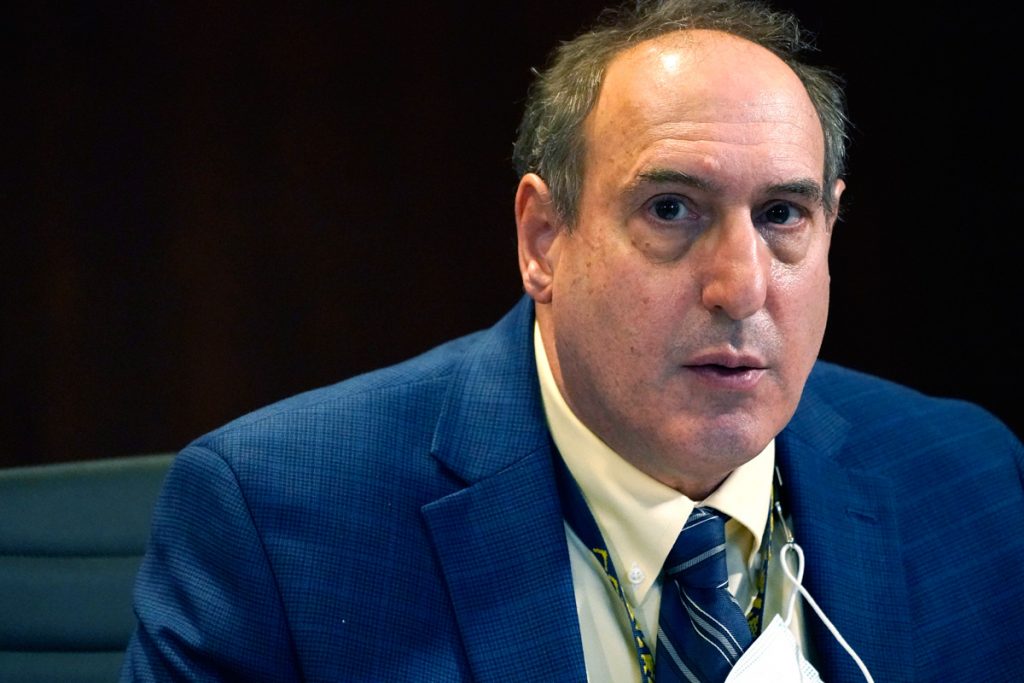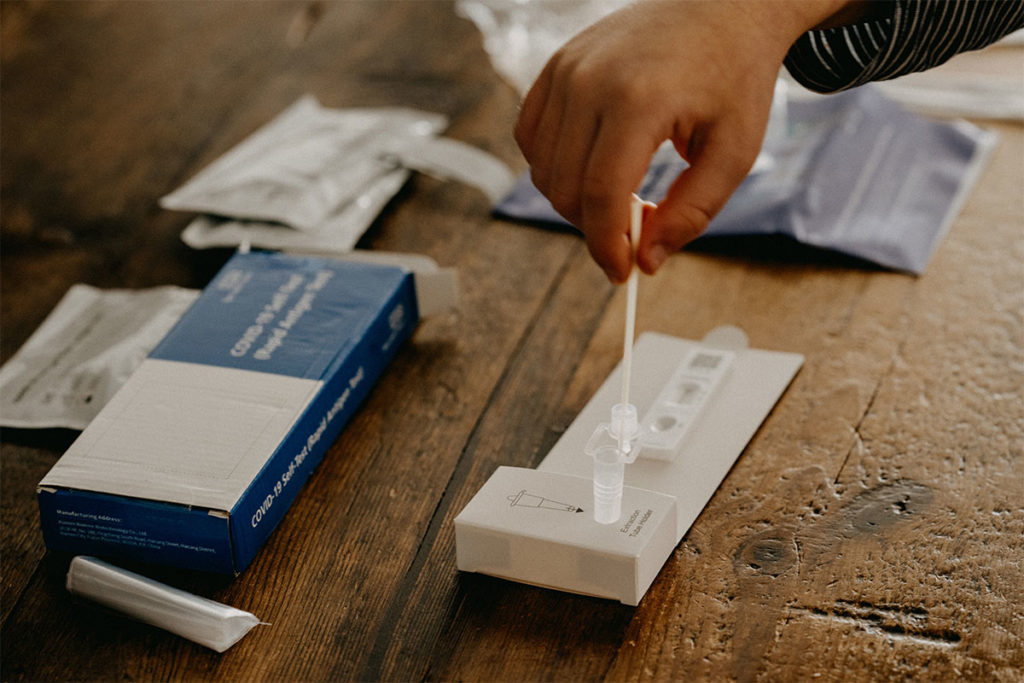Mississippi and the rest of the United States may be in a great COVID-19 undercounting stage, with a surge in transmission that may be late to appear in the official case counts.
Prior to this week, Mississippi State Department of Health data suggested that there was, comparatively speaking, very little COVID in Mississippi at all. Daily case counts are radically lower than they were in the rolling omicron surge. Monday’s weekend report indicated 1,593 new cases detected over the weekend, but that number is derived from a dwindling ability to test and track the virus in the state. On Tuesday, MSDH released a report of 1,100 cases, a marked increase from earlier days and weeks.
Christina Nunally, a nurse practitioner and the chief quality officer at North Mississippi Primary Health Care, posited that an increasing tendency toward home testing may be suppressing case data, an idea that epidemiologists across the nation have endorsed.
“I’m mostly concerned about the at-home testing,” Nunnally told the Mississippi Free Press in an interview. “I’m not concerned that people don’t do it. But while there are mechanisms for reporting a positive test, if you have a population that does not seek medical care (for their symptoms) that person might be less motivated to self report.”

The consequence is a growing surge that appears to be persisting in spite of data comparing it to the least infectious days of the pandemic. Case counts have always reflected an incomplete portion of all infections in any population, but in the era of less-lethal COVID and rapid tests, that undercounting may be far more outsized.
MSDH leadership declined to comment on the scope of the current undercounting, but State Epidemiologist Paul Byers did provide the Mississippi Free Press with a statement acknowledging a growing caseload.
“We are seeing increasing amounts of transmission in Mississippi. The increases in cases are not dramatic, but the trend is important and indicative of increasing transmission,” Byers wrote.
“We are seeing slight increases in hospitalizations and increases in outbreaks in long-term care settings. Long-term care cases and outbreaks are usually reflective of the level of transmission in the community.”
The death rate and the hospitalization rate remain extremely low, however, far lower than the devastating consequences of the earlier delta and omicron surges of late 2021. Experts point to a combination of vaccines and prior infections as the protective measures keeping the most severe outcomes of COVID infection low.
Reinfections More Common?
But while widespread community transmission is not linked to the mass death of earlier surges in the pandemic era, some experts are concerned that the rising toll of infections is not conferring lasting immunity as it did with earlier variants.
Dr. Laith Abu-Raddad, professor of healthcare policy and research at Weill Cornell Medicine Qatar, told The New York Times late last week that omicron was remarkably unreliable at conferring meaningful immunity to reinfection in the way that earlier strains of COVID-19 were.
“Overall, in a national database study in Qatar, we found that the effectiveness of previous infection in preventing reinfection with the alpha, beta, and delta variants of SARS-CoV-2 was robust (at approximately 90%), findings that confirmed earlier estimates. Such protection against reinfection with the omicron variant was lower (approximately 60%) but still considerable,” Abu-Raddad wrote in February.
The emergence of various omicron subvariants may erode that number further. BA.4 and BA.5 are an increasing percentage of the subvariants found in sequencing efforts across the country.
Reinfection is now possible at remarkable speeds. Earlier estimates of the safe window post-infection were roughly three months, providing a relatively extensive period during which reinfection—and thus transmission to others—was extremely unlikely. With delta and omicron, the Centers for Disease Control have identified a reinfection merely 23 days apart.
With such low protection against reinfection, but equally low severe outcomes, it may be tempting to see the current state of COVID-19 transmission as the arrival of the endemic age, when COVID finally recedes from public consciousness as merely another seasonal respiratory virus akin to the flu.

But the pandemic stage is still with us, Byers warned. “We are in better shape than we have been previously, but we are not yet out of a pandemic. We are certainly closer to endemic than we have been at any prior point, but as long as there is continued transmission in many parts of the world, we remain in a pandemic.”
Nunnally acknowledged that the future was remarkably difficult to predict, with neither concrete evidence of a more effective vaccine nor evidence of the pandemic’s end in sight.
“We really don’t know what to expect in the future,” Nunnally said. “Viruses are highly adaptable, and I just don’t think that we should get too complacent as far as what the possibilities are.” But she expects that the most severe outcomes—hospitalizations and deaths—should remain comparatively lower than the worst days of the pandemic.
“At the same time, we do have a lot better treatment options now. That’s something that we can correlate to a decrease in severe illness and hospitalizations. Finally we do have tools in our toolbox now that we can use,” Nunnally said.
Long COVID Lingers On
While COVID-19 deaths may remain suppressed, the footprint and downstream effects of mass infection persist—including with the lingering umbrella of confusing postviral conditions known as Long COVID. Experts warn that there is much more to learn about the virus before assuming that timely, consistent reinfections are no more consequential than regular seasonal illness.
Dr. Justin Turner, CEO of TurnerCare, a Jackson internal medicine clinic, told the Mississippi Free Press in an interview today that some form of Long COVID is remarkably common in his patients. “In my experience, 10% to 30% of our patients struggle with these continued symptoms, including shortness of breath, fatigue, impaired focus and body aches,” Turner said. And that too may be undercounted. “A lot of patients may be associating those symptoms with other things.”
Turner explained that his clinic has only seen one death from COVID-19, dealing with far less severe cases than hospitals. And yet he has still observed many patients with symptoms continuing well beyond the infection itself.

There is a silver lining to Turner’s anecdotal experiences—the lingering effects have largely been temporary. “So far, all of our patients have recovered or are recovering. Some patients had COVID last year, and I’ve seen them recently, and they tell me ‘I’m finally back to feeling like myself.’
But recovering does not lessen the severity of some of the conditions. “Some patients require dialysis,” Turner said. “One patient had heart failure, up to stage four. That patient has now improved to stage two.”
Turner says fully vaccinated, boosted patients show lingering symptoms much less often, and those symptoms are consistently less harsh. “The patients who have been up to date with their vaccine or boosters have appeared to not have Long COVID, or to have had less severe experiences.”
Mississippi’s hospital system is currently more at risk from years of damage and institutional decay than any particular surge of COVID-19. In adults and even in children, the lingering effects of widespread infections have raised serious concern for most of the pandemic. Individual measures like masking, proper ventilation, including holding events outdoors and vaccination still hold value.
“Some people have become lax, complacent,” Turner said. “This is in addition to the COVID fatigue that a lot of us, in health care and otherwise, have already felt. But that doesn’t change the reality that COVID still exists.”









